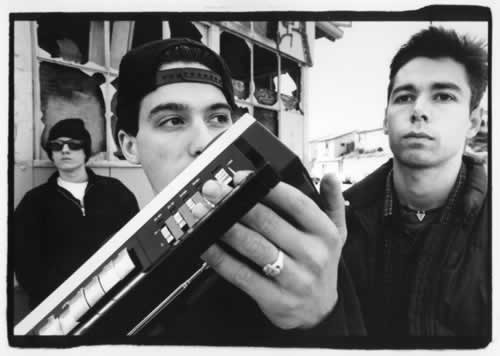
OK, in the broadest sense of the word, all post-Jailhouse Rock popular music is postmodern. Over fifty years ago, rock’n’roll arrived into a post-Auschwitz, post-Hiroshima world in which all the old essential truths and Enlightenment certainties had been blown to smithereens. Rock’n’roll was the cultural expression of a historical moment at which history itself seemed to have collapsed, a blast of feral noise at a time when human civilisation had self-destructively brought itself to the brink of barbarism. It was post-Christian, post-Freudian, post-Einsteinian, and hence also postmodern by default. It was also (on a less melodramatic level) unmistakably the progeny of America, that vast node of the postmodernist worldview; rock’n’roll/pop was the loudest, most visible product of a USA entering its Augustan phase, just beginning to discover in earnest the consumer capitalist ethos that would be its neo-imperialist raison d’être in the ensuing half-century. Ephemeral, playful, and for the most part anti-didactic: it would be difficult to find a more archetypically postmodern form than the musical entity we have come to call pop music in the years since Elvis first dropped.
However, for all that pop music may have always been postmodern at its core, for a long while it existed at odds with, rather than as an adjunct to, ‘classical’ postmodernist art (if that isn’t too much of an oxymoron). Warhol, Reich, and Pynchon might have seemed like the kindred spirits of Dylan, The Beatles, Motown and punk in innumerable superficial ways at the time, but in retrospect they can also appear as polar opposites. The pop musicians of fifties, sixties and seventies were, for all their blasé youthfulness, engaged in establishing a completely new, vital, modernistic tradition (or, to use the less stuffy term advocated by pop-journalist Simon Reynolds, a continuum). By contrast, mainstream, or highbrow, postmodernist art was predicated on the notion of belatedness in relation to long-standing traditions of Western art, concerned primarily with bathos and the multitudinous colourful refractions that can be got out of ironic, nostalgic engagements with an obsolescent culture. While pop music was enjoying a spectacular High Renaissance-like period in the sixties, seventies, and early eighties, postmodernist literature, architecture, and visual art was giving expression to an end-of-history relativistic bleakness; compare Beckett’s elegiac post-religious explorations of the void or James Stirling’s wry, nostalgic architecture with the earnest, optimistic, juvenescent confidence of an Aretha Franklin, a Marvin Gaye, or even a Joe Strummer. In contrast to postmodernist high culture’s riffs on belated absence, pop music offered a powerful and emphatic presence.
But by the late-1980s, pop music had without doubt, in characteristically accelerated fashion, arrived at its own postmodern moment. Since its inception, rock’n’roll had been engaged in a process of continual self-reiteration: witness The Beatles’ ‘Get Back’ traditionalism of 1969 after the convulsions of ’67 and ’68, or glam rock’s fifties-influenced retro-futurism. However, throughout the eighties, as the modernism of punk and post-punk dissipated, the tendency towards revival snowballed, to the point that pop music had caught up with the dominant cultural mode of the age. It was now no longer a marginal or underground alternative to mainstream culture so much as a classic expression of its defining consumerist-postmodernist ethos. Continue reading

